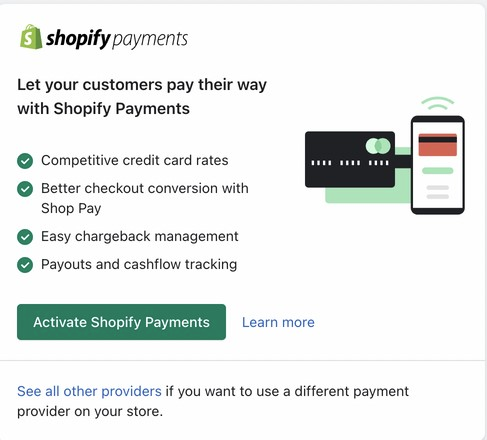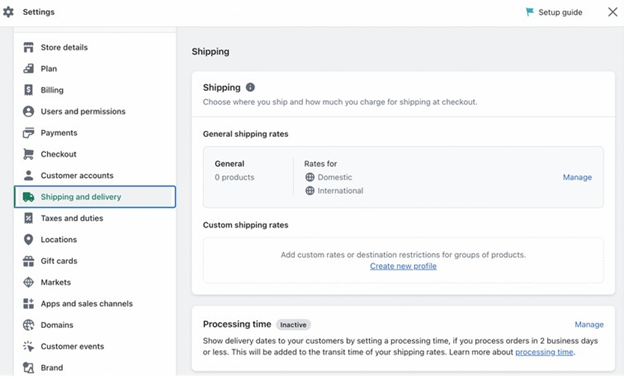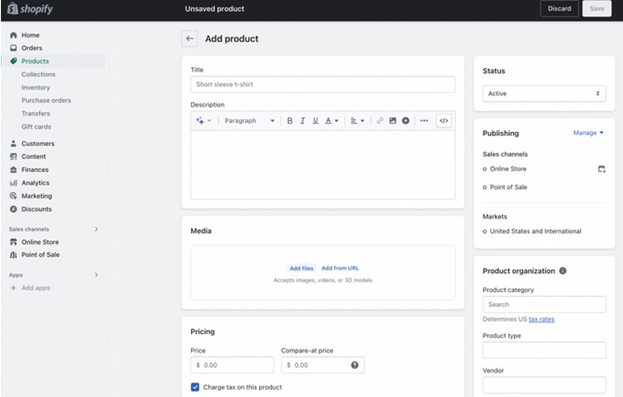So, you’ve heard about Shopify and you are seriously considering venturing into an e-commerce business, but you are not sure how to start.
Well, today is your lucky day, because we are seasoned Shopify professionals who will answer that lingering question — how to sell on Shopify.
In this guide, you will learn everything you need to know about this e-commerce platform, including the technical stuff such as how to set up the online store, what can you sell on Shopify, is Shopify free to sell on, etc.
But first, let us tell you something about Bloggle, and why you should follow our advice.
Why trust us?
- We're the creators of Bloggle, a dynamic Shopify blog builder available on the Shopify App Store that fills the gaps in native Shopify blogging capabilities.
- We're a global force: 3000+ merchants across 60 countries have trusted us to amplify their voices.
- We've already empowered 55,000+ blogs written using our versatile app.

1) Pick your niche
Before we start talking about building a Shopify store, you need to decide what you want to sell in your shop first. Picking a niche is of utmost importance, and it can singlehandedly decide the fate of your Shopify store.
Usually, a niche represents a narrow range of products that your shop sells. However, it can vary from more broad terms, such as healthy food, to ultra-narrow, such as shops selling Kombucha tea exclusively.
In the beginning, conducting deep market research is the most important thing. It should give you a rough idea about the interest your products will trigger, if your competition is strong or weak, and how to start selling on Shopify in general.
If you have already worked in the industry you are targeting, and have insider knowledge about it, that’s amazing! It will give you a headstart over the competition. However, you can’t just rely on your experience and hunch. There are great tools that are tested and proven over and over again you should utilize when conducting deep market research.
Here are four types of tools you can use to find your niche:
Google Trends
You should start with Google Trends. Google Trends is a free resource that allows you to research topics that are currently gathering lots of attention online. It is widely used by journalists when they need to find a story to cover, but it can also be used for market research.
SEO Tools: Ahrefs and Semrush
Google Trends covers current topics of interest, but what about SEO? You can’t neglect Google algorithm and there are several tools you can use. The free one is Keyword Planner, which is not enough. There are so many important metrics that Google stopped showing to Keyword Planner users, and you need to get a paid tool, such as Ahrefs or Semrush, that are much better and provide deep analytics.
Crunchbase
Crunchbase is another helpful tool that can provide information about hot industries and rising tech companies. It is similar to Google Trends in nature, but here you analyze companies and investors instead of hot topics.
Dropshipping tools
And, if you are venturing into the dropshipping business, you should check out Zendrop, or Aliexpress and see which products are wanted right now, and if they are suitable for your business.
2) Start building your Shopify store
We already covered how to build a Shopify store, so here we will just lead you through the steps quickly:
1. Go to Shopify.com and click on “Start a free trial”

2. Next, answer questions about your business, but you can also opt to skip for now

3. After that, you need to create your Shopify ID, and your trial will start

4. Start setting up your store

5. Add a domain

We will assume you already have a domain name ready for your shop. If not, you should go to GoDaddy, Namecheap, or some other domain seller and purchase your domain first.
3) Decide how you want to get paid
After you finish the first part of the setup, you need to complete the Shopify payment details and decide how you want to get paid by Shopify. First, you should go to your Shopify homepage, and from there choose “Set up Shopify payments”.

Shopify is one of the best platforms when it comes to accepting different payment providers. You can choose from Shopify Payments, PayPal Express Payments, Amazon Pay, or some other third-party providers available on Shopify.

After you decide, click on the “Activate Shopify Payments” button. It will lead you to another page, in which you need to fill in your business details, such as EIN, address, SSN, banking information, business type, and customer billing statement.
Of course, make sure to fill all these fields correctly, or your payment gateway won’t work.
We also recommend setting up PayPal payments as well. Customers are often reluctant to buy from a store that doesn’t offer PayPal, as a universally secure payment option.
Accelerated payment options are great for boosting your conversion. We recommend you to consider using:
- PayPal Express
- Shop Pay
- Apple Pay
- Amazon Pay
Just think about it, if you are offering your customers more potential ways to pay and you are faster than your competition, you will definitely gain more customers.
Actually, one of the most common reasons for abandoning the cart is when the merchant doesn’t have your preferred payment option. So, it is of utmost importance to add as many as possible.
After completing these steps successfully, your store will be able to accept payments from your customers.
4) Fill out tax information
If you are from the US, you may be required to pay taxes in the state where your store is based. We recommend you check all that information before deciding on opening the store, because the expenses can rise rapidly and affect your decision.
After you figured out how to set up your sales tax ID (and if it is needed in the first place!), turn on tax collection in Shopify.

Setting up these things can be overwhelming, so you may resort to hiring a specialist who will do this for you. It can save you lots of time. Also, you might be wondering do you need an LLC to sell on Shopify. It is not required, but in some cases, it is highly recommended.
5) Pick shipping methods
Setting up shipping is very important, but often neglected by merchants. They somehow forget to put themselves in the shoes of their customers, and they don’t pay enough attention to shipping costs, and how that can affect their sales.
Don’t be one of them, and make sure that you are offering the best possible rates and shipping options to your customers.
Now, to set up your shipping and delivery options from your Shopify admin, click on “Settings” in the bottom left corner of the screen, and then “Shipping and delivery”.

Select the address you are shipping from and your desired speeds, rates, and carriers you can use. Remember, shipping rates and speeds affect the buyer’s decision greatly. Get the best deals for your customers, and you will be rewarded!

When most people search for products online, the “Free shipping” option is often the deciding factor. But, there is another type of customer — the ones who wish to get their products as soon as possible, and they are ready to pay extra.
So, the winning move here is to offer free shipping to the ones who hunt for the best deals and express shipping to the ones who don’t want to wait for weeks to get their products.
6) Add your products and create a stunning product page
After you finish with your shipping details, it is time to start adding products to your store. You can do it by going back to your homepage and clicking on the “Products” tab on the left-hand side of your screen. Then, click on “Add product”.

On this page, you should manually enter information for each product. It is very important to do this right, so don’t just rush through this process.
Product titles, meta descriptions, images, and pricing affect your conversion rate greatly. You need to name and describe your products correctly so whoever visits your shop can find what they seek through search.
Also, you should do research on pricing the particular category of products. If you are in a crowded niche, you can’t go wild with your prices, they have to be competitive and comparable to other similar shops.
There are several ways to boost product page conversion rate, but these five are the most important ones:
- Add reviews to your product:
Perfect reviews will increase sales significantly
- Giving bundles and discounted prices for higher quantities:
Offer high-paying and returning customers better deals and they’ll keep on returning
- Reinforcing trust:
Having a trustworthy-looking product page is essential for conversions
- Create testimonial videos:
Tools such as LiveMeUp will add a unique touch to your product page
- Compare your products with similar ones to showcase their benefits:
It is easier to remember the important benefits you are searching for if the data is visually appealing
Here is what a great product page should look like:

7) Promote your products through advertising
Product promotion can be roughly divided into two categories:
- Paid advertising
- Organic advertising
When you are just starting up, it is important to set up free channels of promotion first. Of course, you will need paid marketing as well, but you shouldn’t spend lots of money before you even test out free channels of promotion first. After it starts gaining traction, paid advertising should complement organic advertising. Your marketing strategy as a whole should be built based on this synergy. We talked about it in detail in our huge guide about the best ways to promote your Shopify store. In general, you should try every single way of promoting your products, but pay attention not to break the bank.
Organic advertising
There are three main assets of organic advertising:
- SEO:
SEO is essential for the success of your Shopify store. Our SEO Checklist should help you with the implementation of the most important SEO strategies. - Social media:
Social media channels should be utilized for branding awareness, interacting with your target audience, and it can even be essential for a sales boost. Many brands are utilizing Instagram and TikTok reels to drive direct sales, but as a Shopify merchant, your focus should be on building up your follower base. - Email marketing:
Email marketing is a way to keep your followers engaged and ultimately convert them into your customers. As your follower count grows, it becomes harder to do all these interactions manually, so you should consider getting email automation software such as Mailchimp or Klaviyo.
Paid advertising
There are five main forms of paid advertising:
- Google Ads:
Google Ads are the first paid advertising channel to cross your mind. It can boost your visibility significantly, but it is important to know that your brand should be trustworthy and you shouldn’t neglect organic traffic. The customers are becoming more and more varied about the paid results on the top of the page, but if it is accompanied by top organic results on Google you will certainly see an increase in your sales. Google Ads are not that easy to integrate and track with Shopify, but we made a full guide on Google Ads conversion tracking on Shopify. - Social media ads:
Similarly to Google Ads that complement SEO efforts, social media ads complement social media organic strategy. If you own a Shopify store that has many visually appealing products, Instagram ads would likely be the main channel to invest in. - Sponsorships:
Sponsorships are not that easy to get, especially if you are a small e-commerce business owner. However, in every niche, there is a chance for collaboration, if you know it thoroughly. The most important thing is finding the right cost-and-benefit arrangement with potential sponsors. - Referral programs:
Referral programs can be a significant portion of your business income. With these programs, you entice others to market your business, and for that, you will pay them a percentage of each buy they provide. - Partnerships with influencers:
In this day and age, partnerships with influencers can be the most effective brand awareness campaign you can think of. Many influencers formed their companies from scratch, but many of them bought or partnered with existing businesses and rebranded them using their personal brand. Of course, you can work with them on a project as well, by paying them to promote a specific product or service.
8) Create a blog
Creating a blog is essential for the success of your Shopify for at least three reasons:
- Creating brand awareness and keeping your customers updated (news about the brand, promotions, etc.)
- Pivotal for SEO, that will be your long-term traffic provider
- Building trust, serving as a gateway for your email list, and ultimately increasing your sales
You may notice that the default Shopify blog option is far from great. It is lacking style, it is lacking options and it feels completely outdated.
That’s why we created Bloggle, an all-in-one specialized blog builder for Shopify. Our drag-and-drop editor will allow you to create your blog in minutes, and also optimize your posts for SEO, and add products to your blog posts!
That unlocks many possibilities, such as building a whole blog post around the best-selling product, elevating it even more!
Bloggle has many more features, and it is constantly upgrading, as we are committed to making the app even better.
Blogging on Shopify is much easier with our versatile app, and it is the only complete and dedicated blog builder app for Shopify.
9) What are the most successful Shopify stores?
We already guided you through the essentials of selling on Shopify, but there are still many things to learn.
For instance, to get a better idea of what is selling the best on this platform, we compiled a list of 30+ best Shopify stores based on both industry and revenue. Knowing which types of products and which industries are getting more sales can give you ideas and influence the decisions you make about building your Shopify store.
Analyzing these stores include:
- Use them as inspiration to discover new apps:
Shopify apps can greatly enhance the look and function of your Shopify store - Get inspiration from their store design:
UX/UI, how the homepage is structured, how many steps to reach the checkout - Copy their social media strategy:
are they available on Instagram, TikTok, check all their social media accounts - Copy their paid ads strategy:
Use tools, such as Facebook ads library to analyze their campaigns - Copy their SEO strategy:
Get a list of relevant SEO keywords they are ranking on, if they are in the same niche as the reader - Analyze their promotional strategy:
Are they having a lot of sales? How often, what is the discount? - Find out what's the core of their store:
What products do they sell, and what is their pricing model?
10) Is Shopify free to sell on?
Shopify isn’t free to sell on anymore, but there is still a free trial available for their paid plans. There are four plans available:
- Basic for $24 per month
- Shopify for $69 per month
- Advanced for $299 per month
- Plus starts at $2300 per month
The big difference between Shopify and Shopify Plus plan in price is confusing at first, but we compared Shopify vs Shopify Plus before and after reading that article it should be much easier for you to measure which plan is the most beneficial for your business.
FAQ
How much does it cost to sell on Shopify?
Shopify offers four price plans and a 14-day free trial for each of them. The Basic plan is $24 per month, the Shopify plan is $69 per month, the Advanced plan is $299 per month and Shopify Plus starts at $2300 per month.
What can I sell on Shopify?
You can sell almost any type of product on Shopify, from clothing apparel and conditory products to gadgets and home decor.
Is Shopify easy to use for a beginner?
Yes, Shopify is user-friendly and easy to use even for beginners. Of course, technical stuff revolving around building and manipulating the store may seem overwhelming, but there are excellent guidelines for everything.
Summing all up
Selling on Shopify seems overwhelming, but if you are methodical, you can set up your store and start selling in just a few hours.
Knowing how to choose your niche, promote your products, and enhance the default Shopify blog option with Bloggle will give you a head start over the competition and set you on a path to becoming a very successful Shopify merchant.

.svg)






.svg)
